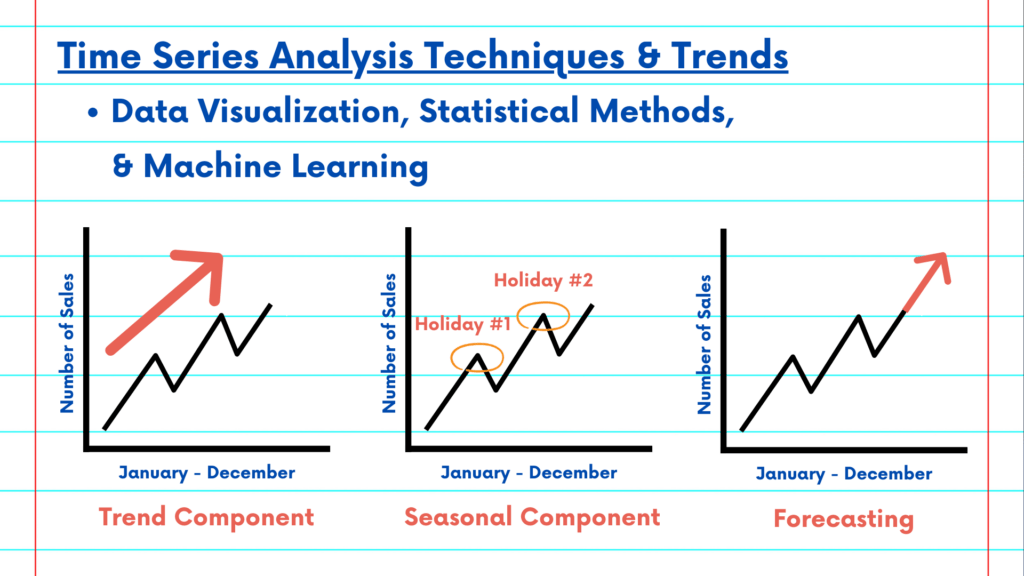This NSDC Data Science Flashcards series will teach you about time series analysis, including data preprocessing, decomposition, plots, and forecasting. This installment of the NSDC Data Science Flashcards series was created by Varalika Mahajan. Recordings were done by Aditya Raj. You can find these videos on the NEBDHub Youtube channel.
Today, we’ll introduce you to an essential concept in data analysis – Time Series Analysis.
Time Series Analysis is a powerful tool used in various fields, from finance to healthcare, to understand and predict trends based on time-dependent data. In this brief video, we’ll cover the basics.
Imagine you’re a stock market analyst, and you want to predict the future price of a stock. Or, you’re a meteorologist, trying to forecast the weather. Time Series Analysis can help with both.
Time series data is a collection of observations taken at different points in time. It can be hourly stock prices, daily temperature measurements, or monthly sales figures – any data where time is a crucial factor.
The core idea behind Time Series Analysis is that the data points are not independent. They are interconnected through time, forming a sequence. Think of it as a signal, and your job is to extract valuable information from that signal.

To do this, we use various techniques, including data visualization, statistical methods, and machine learning. These methods allow us to identify patterns, trends, and hidden insights within the time series data.
One common task in Time Series Analysis is trend analysis. This involves identifying long-term patterns and determining if the data is increasing, decreasing, or remaining stable over time.
Another critical aspect is seasonality. Many time series data exhibit recurring patterns over time. For example, sales data often has seasonal spikes around holidays. Recognizing these patterns is crucial for making informed predictions.
Time Series Analysis allows us to make forecasts. With the information we gather from the data, we can predict future values, which can be invaluable for decision-making in various fields.
To conclude, Time Series Analysis helps us unlock the secrets hidden within time-dependent data, enabling us to make informed decisions and predictions.

Please follow along with the rest of the NSDC Data Science Flashcard series to learn more about time series analysis.
